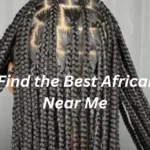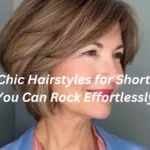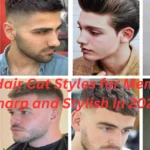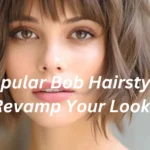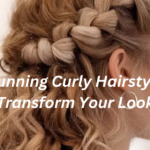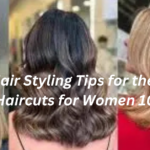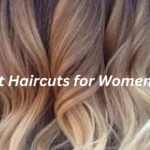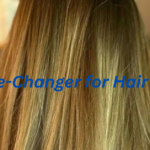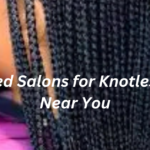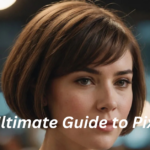Hairstyling is more than just grooming; it’s a form of personal expression and creativity. Whether you want to enhance your natural texture, try a trendy new look, or prepare for a special occasion, having a solid understanding of hairstyling techniques, tools, and products is key to achieving the best results. In this comprehensive guide, we’ll cover everything you need to know to master hairstyling for every hair type, ensuring you can create beautiful, long-lasting looks with ease.
1. Understanding Different Hair Types
To achieve the perfect hairstyle, it’s essential to first understand your hair type. Hair generally falls into four categories: straight, wavy, curly, and coily. Each type requires specific techniques, products, and tools to manage and style effectively. Here’s a quick breakdown of the four types:
- Straight Hair: Typically smooth and sleek, straight hair may lack volume but can be easily styled with the right tools and products.
- Wavy Hair: Falls between straight and curly, offering versatility. It can be styled to emphasize waves or straightened for a polished look.
- Curly Hair: Full of volume and texture, curly hair requires hydration and curl-enhancing techniques to avoid frizz and dryness.
- Coily Hair: Coily or kinky hair has tight curls or coils and needs extra moisture and care. Protective styling can help maintain its health and length.
Understanding your hair type will help you choose the right techniques and products for optimal results.
2. Essential Hairstyling Tools and Their Functions
Having the right tools in your hairstyling kit is crucial to achieving professional-looking results. Here are the must-have hairstyling tools that every hair enthusiast should own:
- Blow Dryer: A blow dryer is essential for drying hair quickly and creating volume. Use attachments like a diffuser for curly hair or a concentrator for straight styles.
- Flat Iron: Flat irons are perfect for straightening hair or adding soft waves. Adjustable heat settings allow you to cater the temperature to your hair type.
- Curling Iron/Wand: Whether you’re going for tight ringlets or loose waves, a curling iron or wand helps create beautiful, long-lasting curls.
- Round Brush: A round brush is ideal for blow-drying and adding volume to the roots while curling the ends under or out for a polished finish.
- Bobby Pins and Hair Clips: Essential for holding sections of hair in place while styling or securing updos.
These tools are the foundation of any hairstyling routine and allow for a variety of styles, from sleek and straight to voluminous curls.
3. Must-Have Hair Products for Styling
The right products can make or break a hairstyle. Here are some key products that will help you style and maintain your hair:
- Hairspray: Locks in your style and provides a range of holds, from light and flexible to strong and long-lasting.
- Mousse: Adds volume and texture to fine or straight hair, making it easier to style without weighing it down.
- Heat Protectant Spray: A must for preventing heat damage from blow dryers, flat irons, and curling tools.
- Texturizing Spray: Perfect for adding volume and a messy, beachy texture to wavy or straight hair.
- Leave-In Conditioner: Keeps hair moisturized, especially for curly and coily textures, and reduces frizz while improving manageability.
These products can help you achieve your desired style while protecting and nourishing your hair.
4. Hairstyling Techniques for Straight Hair
Straight hair can sometimes lack volume and texture, but with the right techniques, you can create sleek, chic styles or add volume for a fuller look.
- Volumizing Blowout: Use a round brush and blow dryer to add lift at the roots while smoothing the ends.
- Sleek and Polished Look: Apply a heat protectant and use a flat iron for a smooth, straight finish. Add shine serum for extra gloss.
- Loose Waves: Use a curling wand to create soft, beachy waves. Hold the wand horizontally for looser waves and finish with a texturizing spray.
These techniques work well for both casual and formal occasions and give straight hair the boost it needs.
5. Best Hairstyles for Curly Hair
Curly hair is naturally voluminous and textured, but it can sometimes be tricky to manage. These styling tips will help you enhance your curls and avoid frizz:
- Diffusing: Use a diffuser attachment on your blow dryer to gently dry curls while maintaining their natural shape.
- Twist-Outs: Twist sections of wet hair and let them dry overnight for defined, frizz-free curls.
- Scrunching: Apply curl cream or mousse to damp hair and scrunch upward to enhance curls without weighing them down.
Curly hair thrives on moisture, so incorporating hydrating products and techniques will help maintain its natural bounce and shine.
6. Wavy Hair: Styling Tips and Tricks
Wavy hair offers versatility, as it can be styled to enhance the waves or straightened with ease. Here are some popular techniques:
- Beachy Waves: Apply texturizing spray to damp hair and scrunch it while drying for an effortless, tousled look.
- Defined Curls: Use a curling wand to create more defined waves by wrapping small sections of hair around the barrel.
- Sleek and Straight: For a smoother look, use a flat iron to straighten waves, but be sure to use a heat protectant to prevent damage.
With the right products, wavy hair can easily switch between casual waves and sleek styles.
7. Hairstyling for Coily and Natural Hair
Coily hair requires special care and techniques to maintain its health and prevent breakage. Here are some styling tips for natural and coily hair:
- Protective Styles: Braids, twists, and bantu knots protect your hair from environmental stress and help retain length.
- Moisture is Key: Always keep coily hair hydrated with leave-in conditioners and oils to reduce dryness and frizz.
- Stretching Curls: Use twist-outs or braid-outs to elongate curls and reduce shrinkage for more length and volume.
These techniques help keep coily hair healthy, stylish, and manageable.
8. Short Hair vs. Long Hair: Styling Differences
Short hair is all about creating texture and definition, while long hair offers more versatility with updos and braids. Here’s how to style both lengths:
- Short Hair: Use texturizing spray or pomade to add volume and definition to pixie cuts or bobs. Play around with sleek looks or tousled waves.
- Long Hair: Try braids, voluminous curls, or sleek ponytails. Long hair allows for more elaborate styles but requires regular trims and conditioning.
Each length has its advantages, and choosing the right style depends on your hair texture and personal preference.
9. Popular Updo Hairstyles for Any Occasion
Updos are perfect for both casual and formal settings. Here are some popular styles:
- Messy Bun: An easy, casual updo that works for any occasion. Gather your hair into a loose bun and secure with bobby pins.
- Sleek Low Bun: For a more polished look, create a low bun at the nape of your neck and smooth down any flyaways with hairspray.
- Half-Up Twist: A stylish yet simple look where the top half of the hair is twisted and pinned back, leaving the rest of the hair down.

